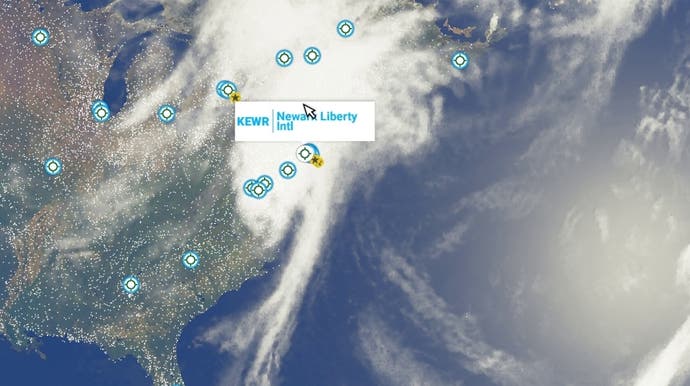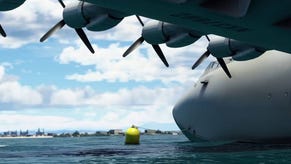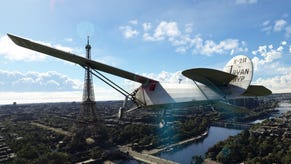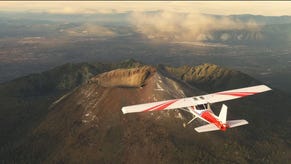Chasing Storm Isaias in Microsoft Flight Simulator
How accurate exactly is the weather in the forthcoming sim?
Sometimes it's fine to just talk about the weather. The past couple of days a friend has been telling me, over one of the WhatsApp groups that's kept me sane the past few months, about the storm that's been hitting his part of the world. Storm Isaias hit the Carolinas earlier this week before tearing a path up through Virginia, New Jersey and the east coast of America. It's a ferocious thing, leaving millions without power - it left my friend in Connecticut in the dark - and sadly much worse, claiming lives on its way. I was curious to see it up close, from the safety of my own home, via the new Microsoft Flight Simulator.
Real-time weather - or as close to real-time as you can reasonably get - is a key feature here, with data being pulled in from Meteoblue, where observations are combined with complex predictions to get something approaching accuracy. I'm no meteorologist, so I can't speak precisely to its authenticity - and I'm afraid my own methodology when exploring how accurate it is isn't particularly scientific. All I know is that when I went to check the progress of Isaias on smart weather visualization site Windy and tabbed back into Microsoft Flight Sim, it was close enough to not be bothered by the difference.
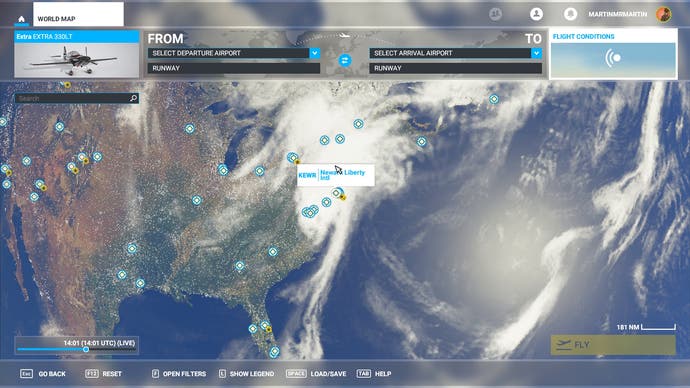


So I set off at first from Richmond International Airport, heading north into the tail-end of Isaias. And it is, as you expect, absolutely miserable, with next-to-no visibility. I'm still a relative newcomer to this flight sim lark, so while I should be beholden to instrument flight rules and use the intricate array of dials and software to guide me I simply head straight into the murk to get a feel for what it's like flying in such extreme conditions.

An aerobatic machine like the Extra 330LT makes light of it all, the Cessna 172 gets churned up in the cloud cover while a short trip in a Daher TBM 940 just makes me grateful that I'm going to remain on terra firma for the foreseeable future as it dips and shears, often losing hundreds of feet at terrifying speed as it hits pockets of turbulence. It is, as it should be, not a particularly pleasant experience.

It's an effective way to get to grips with Microsoft Flight Sim's handling, though, as well as a decent way for the simulation to flex itself. What's impressive is how, even in all the gloom and grey of a sizeable storm, Microsoft Flight Simulator still looks absolutely splendid. On the runway the rain's almost falling sideways such is the wind, and it streams against the windows as we build speed down the runway. Its behaviour is even impacted by the prop as it whirls water out of its way.
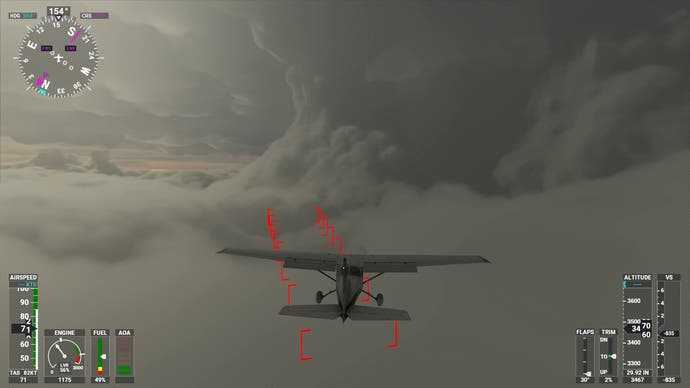

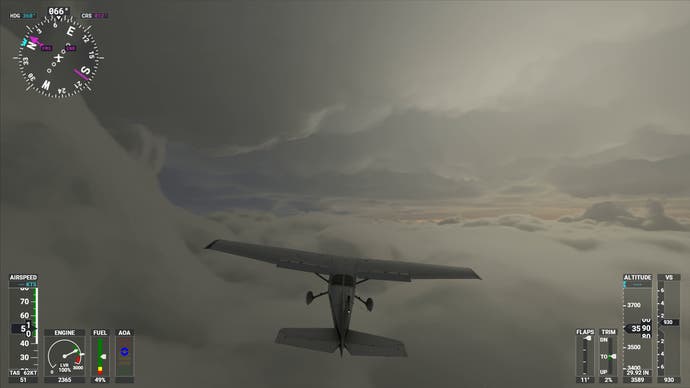
At low altitude you can just about make out pockets of Virginia, but it's in the heavens where the true spectacle can be found. Three and a half thousand feet up and you can break cloud cover at Isaias' tail, a small pocket of peace where you can see the storm whirl and flash away while you're up above and oblivious to its fury. It's one of what's now running into dozens of moments where Microsoft Flight Sim has made me catch my breath, letting me check in on the phenomenal conditions that are gripping the other side of the world. What a staggering thing this game is turning out to be.
